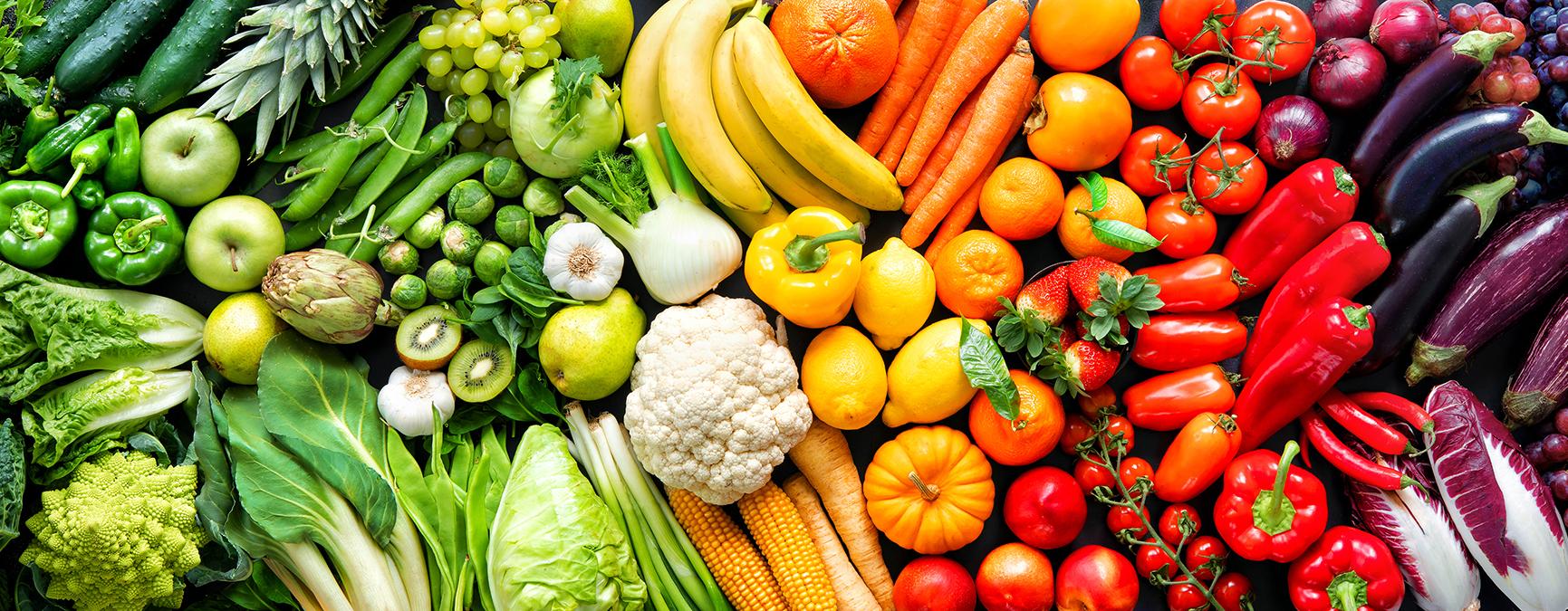We've all heard the phrase 'you eat with your eyes' and know that food that looks appetising generally tastes better too. But why is it important to consider the colour of your food when eating a balanced diet? Our nutrition team offer an explanation and some suggestions for foods to add to your next shopping list.
As a general rule we should avoid eating too much ‘beige food’ – think white bread, chips, chicken nuggets etc. Food that is naturally brightly coloured is usually a healthy choice, but why is this? The bright colours in fruits and vegetables are actually due to the phytonutrients they contain, and different colours are created by different combinations of phytonutrients. These phytonutrients may have a number of different health benefits, as can be seen in these examples adapted from the Harvard Medical School blog:
Red: Rich in lycopene, which is thought to protect against prostate cancer as well as heart and lung disease.
Found in: tomatoes, watermelon, red peppers, pink guava
Orange and yellow: Provide beta cryptoxanthin, which may help prevent heart disease.
Found in: carrots, sweet potatoes, yellow peppers, oranges, bananas, pineapple, tangerines, mango, pumpkin, apricots, butternut squash, peaches, melon, sweetcorn
Green: These foods are rich in sulforaphane, isothiocyanate, and indoles, which inhibit the action of cancer-causing compounds.
Found in: broccoli, kale, cabbage, brussels sprouts
Blue and purple: Have powerful antioxidants called anthocyanins believed to help the heart by reducing risk of blood clots.
Found in: blueberries, blackberries, elderberries, black grapes, raisins, aubergines, plums, figs, prunes, purple cabbage
White and brown: The onion family contains allicin, which has anti-tumour properties. Other foods in this group contain antioxidant flavonoids like quercetin and kaempferol.
Found in: onions, cauliflower, garlic, leeks, parsnips, daikon radish, mushrooms

